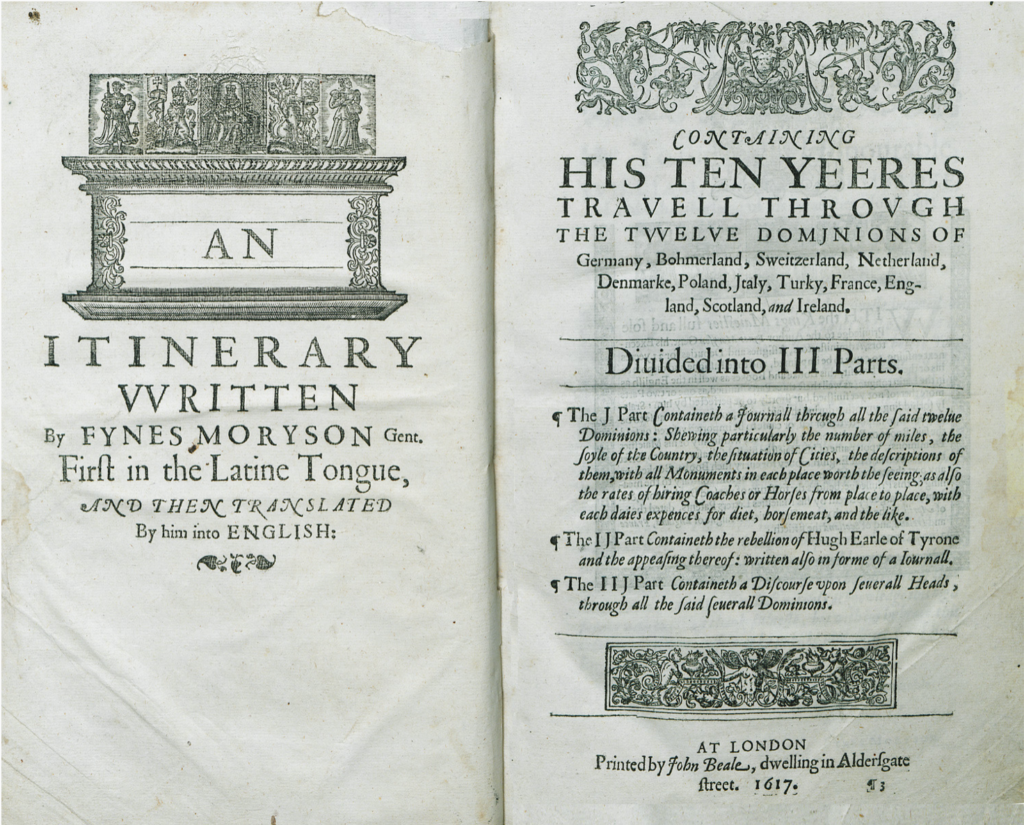
Fynes Moryson spent his time travelling the European continent and the eastern Mediterranean lands in the 1590s. He was Cambridge-educated and was curious about the cultures and social conditions of different countries. An Itinerary is the result of his diligent notetaking during his trip. He recorded not only his daily excursions and observations but also his expenses in great detail. The cost of horses, food, and the rates of the coaches were included in the account. Another feature of his book is that he included maps of major cities and marked their monuments on the map. It therefore serves as a reliable source for anyone who is interested in the travel routes, sights, and cost of living in the sixteenth century. His journey in Italy started in Padua; he then went to Venice, and after traveling along the Adriatic Sea, he came to the Tyrrhenian side. His visit to Pisa starts with a description of the topography of the city. He used part of the three-page long description of Pisa for a description of the Camposanto (along with the Cathedral and the Tower of Pisa). Unlike Dallington, Moryson not only mentions the legend of the holy earth but also the architecture of the Camposanto. / DJ
Moryson_An Itinerary_Pisa_markedEdition: Fynes Moryson, An Itinerary Containing His Ten Yeeres Travell through the Twelve Dominions of Germany, Bohmerland, Sweitzerland, Netherland, Denmarke, Poland, Italy, Turky, France, England, Scotland & Ireland, 4 vols. (Glasgow: MacLehose, 1907-1908), 1:312.
“Not farre thence is a yard used for common buriall, called the holy field, vulgarly Campo Santo. In which the Emperour Fredericke Barbarossa, returning from Hierusalem, did lay great store of earth, which he had used for ballast of his ships;and they say, that dead bodies laid there, doe consume in a most short time. This yard is compassed with a building all of Marble, which lies open like a Cloyster, (we call it a terras) and the same is covered with lead very sumptuously, having in bredth 59 pillars, and in length 189. each distant from the other thirteene walking paces. So as (in my opinion) this yard for burial is much more stately, then that most faire yard, which I formerly described at Leipzig in Germany, called in Dutch Gotsacker.”
